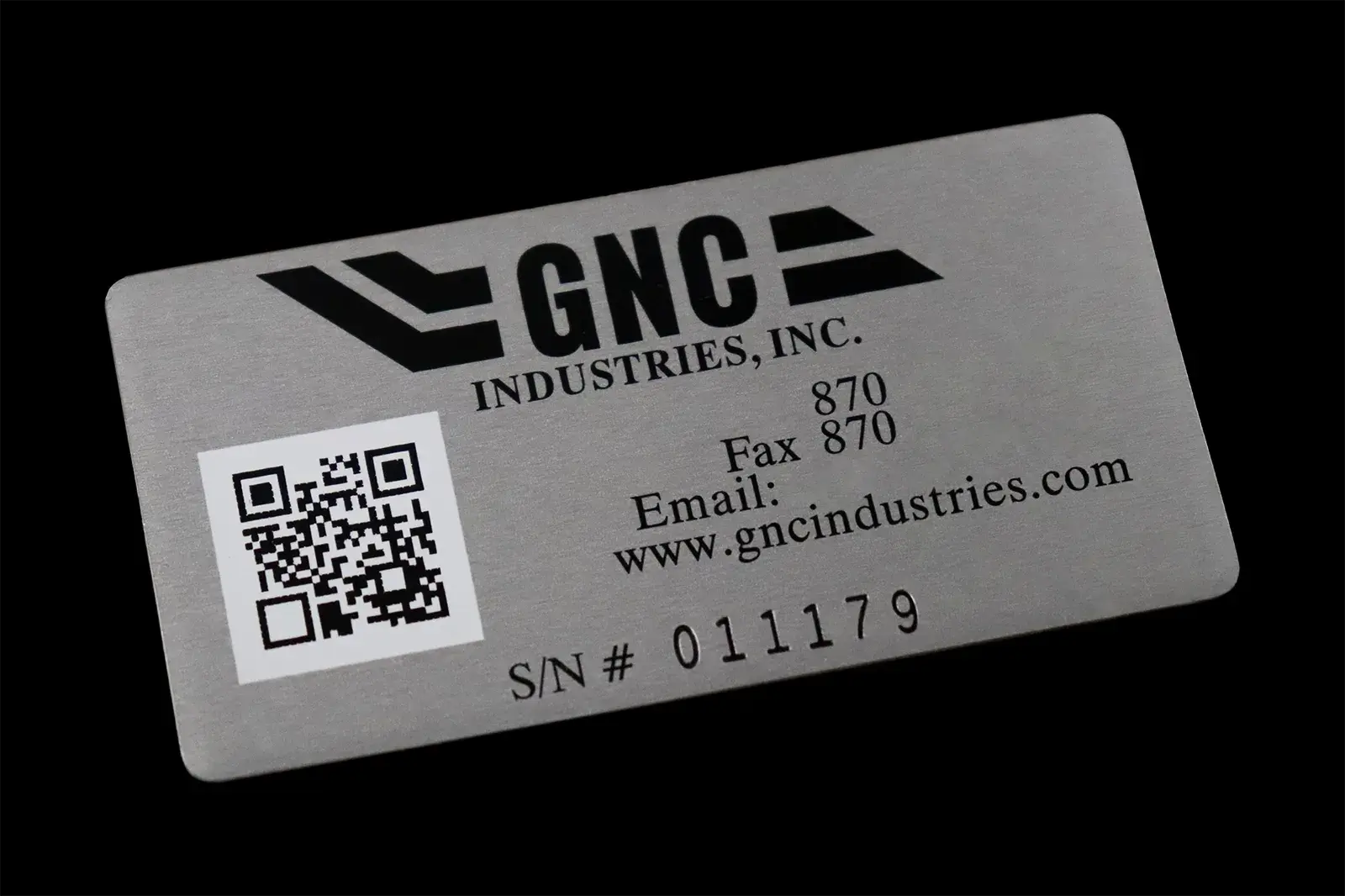Businesses today face a growing need to track and manage their valuable assets - whether it's high-cost equipment, tools, electronics, or inventory. In some cases, the need for product identification is driven by branding, but more often than not, it's about security, visibility, and protecting investments. Misplaces, lost, or stolen asset can lead to costly setbacks, and companies are increasingly turning to asset tags as an effective solution to minimize these risks. These small, but powerful tools allow businesses to maintain control, keep track of valuable resources, and improve overall security.
What Information Should be Included on an Asset Tag?
Unlike decorative product labels, asset tags are designed to be discreet and functional. Typically placed on the back or in less visible areas of equipment, asset tags provide essential information that can be easily scanned or referenced. While the design is usually simple, the information is critical for asset tracking, control, and security. Here's a look at some of the most commonly included types of information:
QR Codes
QR codes are becoming increasingly popular for asset identification because of their simplicity and versatility. A small, scannable graphic can provide immediate access to detailed information about a product or asset. This could include a URL to a product page, a video, inventory status, or even a special offer. Because QR codes can be scanned with smartphones or tablets, they are accessible to virtually anyone, making them an ideal choice for businesses and consumers alike!
Bar Codes
Similar to QR codes, barcodes are another efficient way to encode data for easy retrieval. When scanned, barcodes can provide a wealth of information, including product make and model, serial numbers, purchase details, and contact information. Barcodes streamline inventory tracking and ensure that the data is available quickly and accurately, especially in high-volume environments where speed is crucial.
Consecutive Numbering
Serial numbers or consecutive numbering are key for companies that need to track where products are or where they have been. Serialized asset tags are especially important for items that need to be uniquely identified, either for warranty tracking, shipment history, or internal audits. Often, serialized numbers are paired with a barcode, allowing for easy scanning and efficient tracking at every stage of the product's lifecycle.
Much like data or rating plates, asset tags store critical information in a format that can be easily updated and accessed. This can include product specs, warranty information, and maintenance history, allowing companies to stay on top of asset management with minimal effort.
Choosing the Right Material for Your Asset Tags
Asset tags can be printed on a variety of materials, with metal and plastic being the most common substrates. The choice of material plays a big role in durability, readability, and the environment in which the tag will be used. For more information on substrate options offered, download our free Substrate Guide eBook!
Plastic Tags: Most commonly used for general-purpose applications and are versatile, cost-effective, and durable for indoor environments.
Metal Tags: Ideal for harsh conditions where resilience is crucial. These tags can withstand outdoor exposure, extreme temperatures, and rough handling, making them perfect for industrial or high-risk environments.
In addition to printing, techniques like embossing or doming can be applied to enhance the tag's appearance or durability, making it stand out (literally) and last longer. Digital printing is typically used for asset numbering and labeling, but metal stamping and screen printing are also options, especially for more industrial applications requiring pre-numbered or color-filled tags.
By combining the right materials and production techniques, companies can create asset tags that are easy to scan, high durable, and capable of withstanding wear and tear, reducing the need for frequent replacements and ensuring the tag's effectiveness overtime.
How Can Asset Tags Help?
Ultimately, asset tags are an essential part of a comprehensive risk management strategy. They help companies stay on top of inventory, protect valuable assets from theft or misplacement, and streamline maintenance processes. By utilizing asset tags with barcodes, QR codes, or serial numbers, businesses can track and monitor their assets with ease - saving time, reducing errors, and lowering costs.
- Improve Efficiency and Reduce Downtime: Eliminate the confusion and delays that come with searching for lost or misplaced equipment or inventory.
- Minimize Loss and Theft: Missing assets can quickly turn into lost revenue. Keep tabs on your equipment with a simple tracking system.
- Streamline Maintenance and Preventative Care: Easily track and schedule routine maintenance to extend the lifespan of your inventory.
- Enhance Tax Reporting and Compliance: Streamline the process by providing an organized system for tracking and documenting your assets. Keep everything in order to avoid penalties or inaccuracies.
- Boost Accountability and Control: When every asset is tracked, it's easier to hold employees accountable for its use. This transparency encourages responsible use and helps prevent misuse or neglect.
- Support Long-Term Financial Planning: Whether you're budgeting for new equipment or assessing the need for replacements, knowing where your assets stand enables you to plan for future growth.
- Streamline Audits and Inventory Management: Save both money and time by reducing the need for manual inventory checks and minimizing the risk of human error.
How Can We Help?
At McLoone, we understand the critical role asset tags play in managing your assets effectively. Our Team of experts is ready to help you choose the right materials and designs to ensure that your assets are properly labels and tracked, no matter the application. Whether you're dealing with tools, electronics, or other high-dollar items, we';; work with you to find the best solution for your needs.
Let us take the stress out of asset management - contact us today to learn more about how we can help safeguard your assets and improve your business operations!


